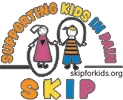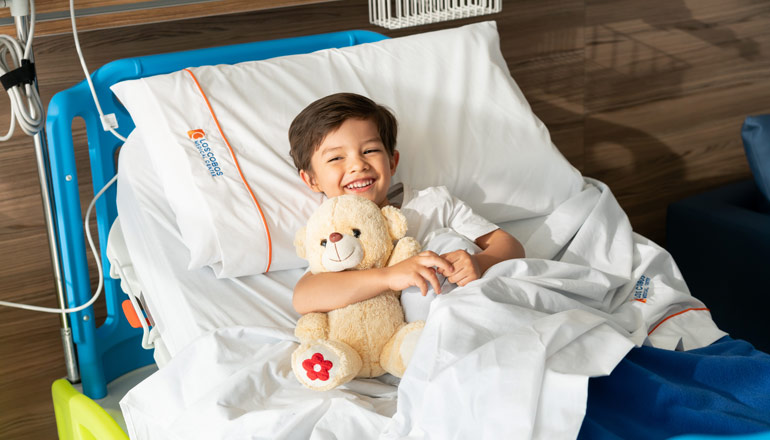Giving toys to sick children helps more than you think
A decade later, after multiple tests and surgeries to treat an unknown genetic condition, Froggie remains his best friend. The tattered stuffed animal accompanies him into every operating room and helps him go to sleep each night.
There’s no denying that toys in the hospital can bring sick or injured children cheer during a bleak time, comfort in an unfamiliar place, and distraction from the fears that plague them. It’s one of the reasons Sacred Heart Medical Center gives pediatric patients a toy every time they’re admitted or come in for surgery. Kids enter the hospital’s 16-bed pediatric unit for a variety of reasons—respiratory illness, broken bones, surgery. Often they go home the same day, but sometimes they stay for as long as two weeks, said Theresa DeVoogd, the hospital’s pediatric unit coordinator. A toy “really impacts healing from the very beginning,” she said. “It offers reassurance, something familiar, and it immediately decreases the stress and fear in the patient’s room.” Parents and community members often feel helpless in the face of pediatric illness or injury. While medical outcomes rest in the hands of doctors, there’s a lot we can do to help our community’s smallest patients. Donating a single new toy, for example, can help make a child’s hospital stay brighter and less frightening.Can a toy really make a difference? Multiple studies have proven that it can. Toys help healthcare workers build trust with young patients, reduce the physical symptoms of anxiety and can even accelerate the healing process. Here’s what researchers have discovered:
Toys soothe fear and anxiety.
Going to the hospital “can be a scary situation, especially for young children who don't fully understand why they have to stay in the hospital,” DeVoogd said. Pediatric patients grapple with sometimes overwhelming fears—of pain and death, the unknown, separation from their parents, unfamiliar hospital staff, and the loss of power, control and comfort.For children who need surgery, researchers have found that pre-operative play significantly reduces anxiety by giving them a way to express their feelings freely.
“The management of anxiety in children leads to the best psychological and physiological response to surgery and better managing of their health,” said medical researcher Fatemeh Ghabeli. “Toys, by creating a positive mood in children, allow them to cope with hospital conditions.” The effects aren’t just psychological. Therapeutic play has been proven to reduce the physical symptoms of anxiety, as well.They help children cope with the unknown.
Going through a medical procedure is a venture into the unknown even for adults. For children, it’s even more intimidating. When children in the hospital play, they’re often coping with the question marks that lie ahead.“Play helps children become familiar with the—until then—unknown environment of the hospital” and familiarize themselves with the medical procedures required, said researcher Konstantinos Koukourikos. “Teddy bears often accompany children to the hospital and stuffed animals are in the arms of young children whenever there is a blood test or, for example, when they are vaccinated.”
They help hospital staff bond with children.
Toys can also change how pediatric patients view healthcare workers, DeVoogd said, transforming them from scary strangers into caring helpers.
Nurses often use play as a healthcare strategy for hospitalized children, particularly for preparing those who are about to undergo surgery and other painful or unpleasant procedures. For example, teddy bears or dolls can become models for demonstrating to the child how a procedure will be done, such as placing a peripheral venous catheter.
“Toys and games are at the center of children’s lives,” says the Journal of Healthcare Engineering. Using them to communicate with children “is a natural method that can facilitate establishing a relationship between children and healthcare staff.”
They motivate kids to get better.
When a hospitalized child is able to play, it’s a good sign. It often heralds the success of treatment or the return of health.Toys can also become a tool for urging kids forward in their healing process. Stuffed animals, dolls, action figures, board games, movies and video games give caregivers “a wonderful motivational tool in helping our pediatric patients get to their next level of recovery,” DeVoogd said. They also provide “a diversion and distraction during the hospital stay, especially during the time when they are well enough to want to do something fun but not well enough to actually be able to do it.”
As children play, they can work through their feelings about being in the hospital, which helps reduce the intensity of negative feelings about their experiences. This helps clear the way for healthcare workers to cultivate the positive mindset young patients need to achieve healing.
The value children place upon toys cannot be overstated. A doll or stuffed animal can become a best friend. A game or movie can provide a much-needed distraction from boredom and fear. Will you help us provide these powerful healing tools for the sick and injured children in our community?









